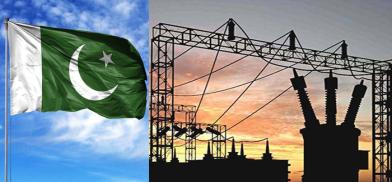Pakistan’s energy sector is going through a paradigm shift: A greener electricity production portfolio is a policy imperative
The Pakistan government has set a target of generating at least 20 percent renewable energy by 2025 and at least 30 percent in the next five years, writes Haris Mushtaq for South Asia Monitor

Starting from the 1960s till the late 80s, all power generation facilities of Pakistan were publicly owned. During this period, the installed hydropower generation facilities constituted more than half of the installed capacity of the country. Electricity was a vertically integrated utility, controlled and administered by the federal government. Pakistan Water and Power Development Authority (WAPDA) was responsible for the development, construction, and operation of all generation facilities in the whole of Pakistan except the city of Karachi in Sindh province. All energy sector developments were financed through public funds.
In the early 1990s, the private sector was invited to develop thermal and hydropower projects. With increased investment in the thermal sector, the share of hydropower swiftly declined in the 1990s such that by 1997, the proportion of hydropower dwindled to 37 percent in the WAPDA system. 39 percent public sector thermal installations and 24 percent Independent Power Producers (IPP) constituted the remaining fuel mix (NTDC, 2014). By 2005, natural gas as fuel for power generation overtook half of the energy mix in Pakistan (Malik, S. 2019).
Later years witnessed declining local gas discoveries, Consequently, the local supply of natural gas could no longer cater to the increasing energy demand. This led to fuel mix reconfiguration; natural gas contribution dropped down to ~35 percent and oil share rose to 31 percent (Ministry of Energy, 2018).
The new varied fuel mix externalized Pakistan’s energy security, costing billions to the national exchequer. Petroleum and oil products worth 14.77, 12.17, and 7.67 USD billion were imported in FY14, FY15, and FY16 respectively (State Bank of Pakistan, 2016). This called for diversification of the energy mix.
Pakistan Intended Nationally Determined Contributions
National governments are required to publish their "Intended Nationally Determined Contributions" (INDCs) to attain greenhouse gas (GHG) stability in the atmosphere within a period that allows for appropriate adaptation to climate change as part of the international climate policy system. Hence, an INDC substantially indicates a country's contribution to meet the Paris Agreement's universal objective and the country-level compliance mechanism.
To this end, Pakistan plans to significantly increase the share of renewable energy (hydro, solar and wind, in particular) in the generation mix in the coming years.
The latest Indicative Generation Capacity Expansion Plan (IGCEP) submitted by the NTDC to the power sector regulator, NEPRA, envisages 28,794 MW renewable energy installations (hydro, wind and solar) amongst 53,315 MW total installed capacity of the NTDC system (Pakistan excluding Karachi) by 2030 i.e., around 54 percent of the installed capacity would be renewable (IGCEP, 2021). In terms of energy generation, 59.4 percent of energy would be generated by renewable sources by the end of 2030. This means Pakistan’s energy generation sector emissions would stand at 0.202 kg-CO2/kWh by that time (IGCEP, 2021).
An interactive dashboard for energy sector
As per Pakistan’s INDCs, the country recently announced its Alternative and Renewable Energy (ARE) Policy 2020. This policy establishes specific goals, which may be revised from time to time through executive action instead of policy amendment. The Pakistan government has set a target of generating at least 20 percent renewable energy by 2025 and at least 30 percent in the next five years, that is 2030.
To meet these goals, the government will buy a higher share of new capacity from ARE Policy 2019, taking into account the restrictions of baseload versus variable generation requirements, as well as ARET's hybrid solutions that are approaching baseload capacity factors.
Against this backdrop, an interactive dashboard (https://share.streamlit.io/haris021/energy_dashboard/main/Pak_Energy_dashv2_final.py) has been developed to visualize the energy sector of Pakistan over the last three decades to capture the change over time onto an illustrative dashboard. The users can see the progressions in the energy sector of the country to grasp policy decisions made by successive governments for the last thirty years. National Electric Power Regulatory Authority’s (NEPRA) State of Industry Reports, National Transmission, and Despatch Company (NTDC) data and Pakistan Energy Yearbook and International Energy Agency data were consulted and employed for the visualization development.
The dashboard provides key insights through four key summaries - namely, consumption by sector, peak demand, energy mix and electricity generation. The shift in policies is quite evident from the summaries presented in the dashboard.
Pakistan’s energy sector is going through a paradigm shift. Global trends and substantiality requirements envision a greener electricity production portfolio. The next five years are crucial and would likely set the direction and pace of the electricity sector of Pakistan for generations to come. For an effective future policy regime, a retrospective and prospective approach is required. The dashboard provides the grounds for the former whereas the latter can draw from the experiences of the developed counterparts of the world.
References
Indicative Generation Capacity Expansion Plan (IGCEP), available at www.nepra.org.pk
Malik, S., Qasim, M., Saeed, H., Chang, Y. and Taghizadeh-Hesary, F., 2019. Energy security in Pakistan: A quantitative approach to a sustainable energy policy.
Ministry of Energy. 2018. Pakistan Energy Yearbook. Government of Pakistan 2018. Economic Survey of Pakistan. Government of Pakistan.
NTDC. 39th Power System Statistics 2013-14
State Bank of Pakistan. 2018. Annual Report 2017–2018—The State of Pakistan's Economy.
(The writer is a research analyst at Global Change Impact Studies Centre, Islamabad, Pakistan. The views expressed are personal. He can be contacted at harismushtaq21@yahoo.com)










Post a Comment